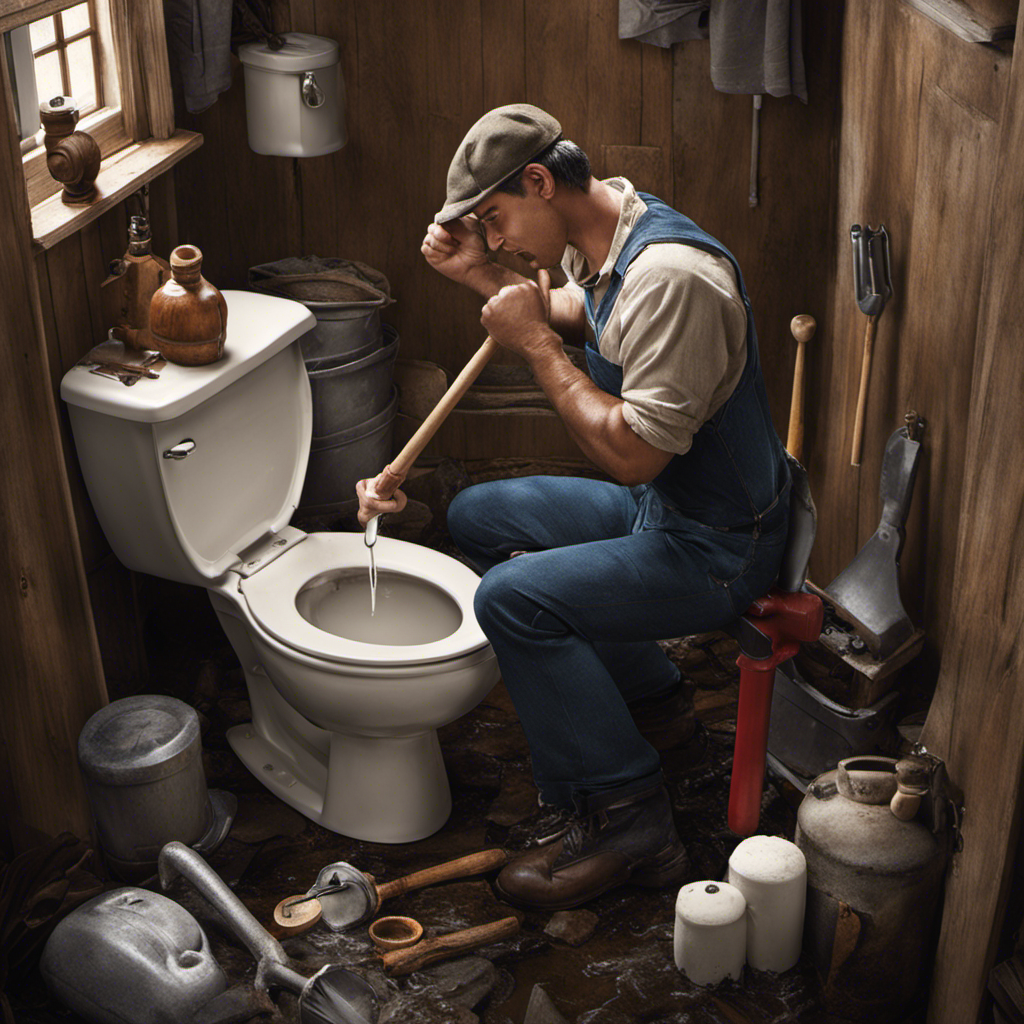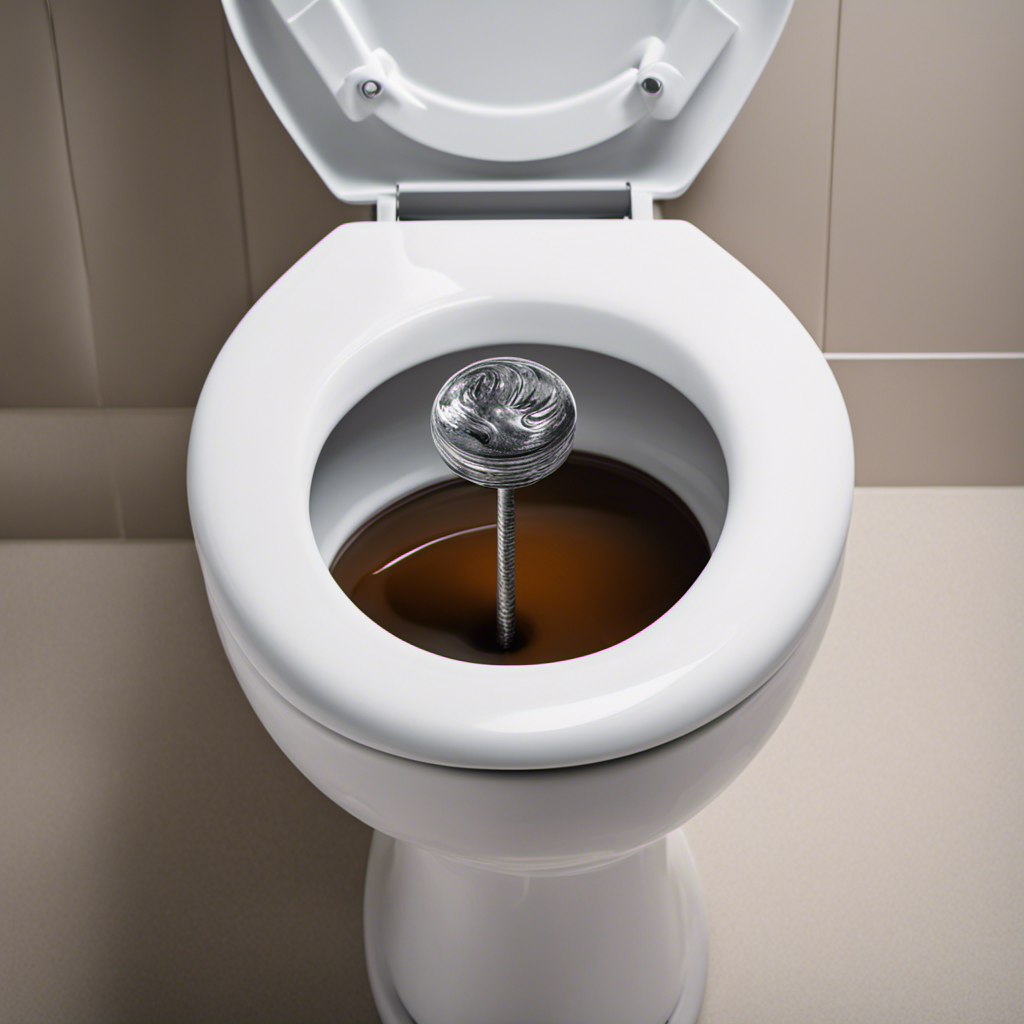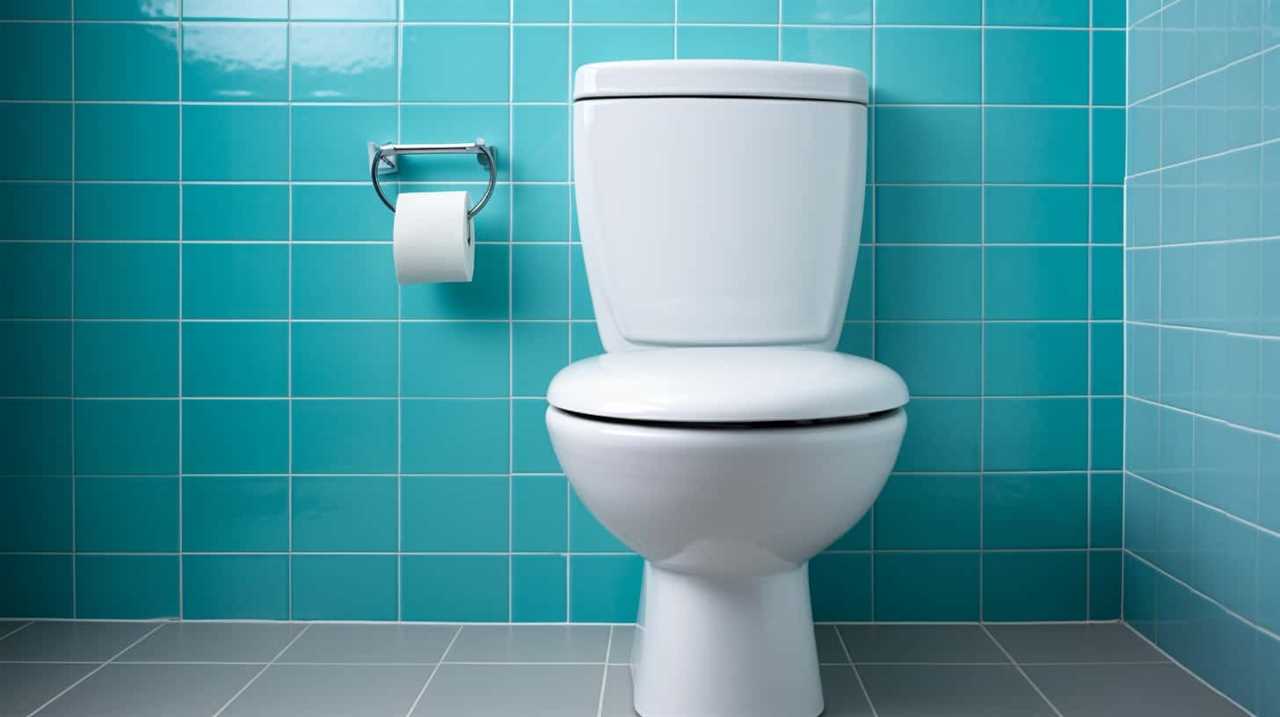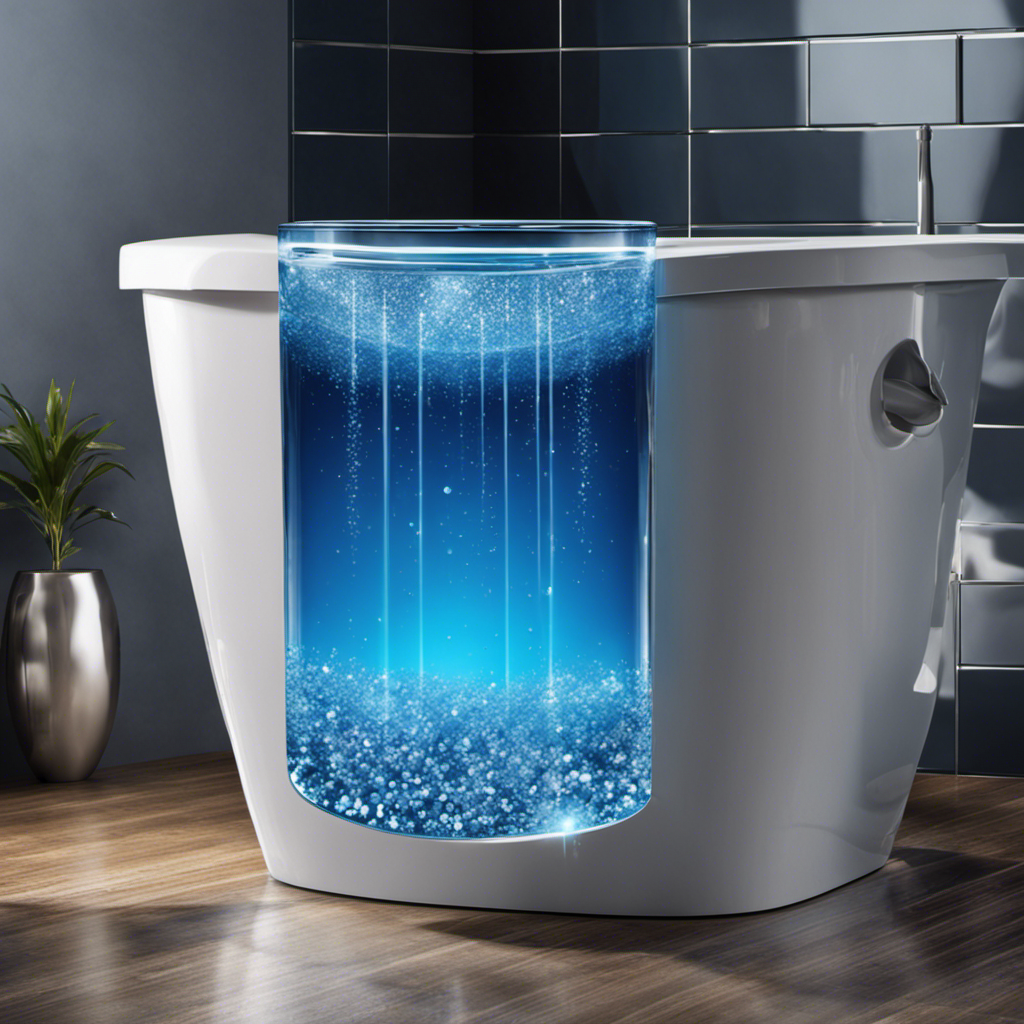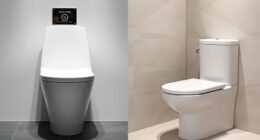Have you ever experienced the frustration of a clogged toilet? It’s a situation that can quickly turn into a messy and unpleasant ordeal.
But fear not, because in this article, I will guide you through the steps to take when your toilet is clogged.
From understanding the problem to assessing the severity, and from quick fixes to DIY methods, I’ll provide you with the knowledge and solutions you need to tackle this issue head-on.
So let’s dive in and unclog that toilet!
Key Takeaways
- Flush only reasonable amounts of toilet paper to prevent clogs.
- Use preventive measures like regular cleaning and using less toilet paper to avoid excessive clogs.
- Use quick fixes like plungers, wire hangers, hot water and dish soap, or baking soda and vinegar to temporarily unclog the toilet.
- Call a professional plumber if DIY methods don’t work, there are recurring clogs, there is a sewage backup, or foul odors are present.
Understanding the Problem
Before attempting to fix the clogged toilet, it’s important to understand the problem.
A clogged toilet can be caused by a variety of factors, but the most common causes are flushing excessive toilet paper, flushing non-flushable items like wipes or feminine hygiene products, or a buildup of mineral deposits and debris in the pipes.
To prevent clogs, it’s important to only flush toilet paper in reasonable amounts and ensure that non-flushable items are disposed of properly in the trash. Regular maintenance, such as using a plunger or a toilet auger, can also help prevent clogs.
Understanding these common causes and implementing prevention tips can help you avoid future clogs and keep your toilet functioning properly.
Now, let’s move on to assessing the severity of the clog.
Assessing the Severity
To determine how bad the situation is, you should first check the water level in the bowl. If the water is rising or overflowing, it indicates a severe clog that needs immediate attention.
Identifying common causes of toilet clogs can help prevent them in the future. Common causes include flushing excessive toilet paper, flushing non-flushable items like wipes or feminine hygiene products, and flushing large amounts of waste at once.
To avoid clogs, it is important to use toilet paper in moderation and dispose of non-flushable items in the trash. Additionally, flushing smaller amounts of waste at a time can help prevent blockages.
Regular maintenance, such as using a plunger or drain snake, can also help prevent clogs from becoming severe.
Quick Fixes and Temporary Solutions
If you’re in a pinch, try using a plunger to unclog the toilet. It’s a simple and effective tool that can often solve the problem. However, if you don’t have a plunger or it’s not working, there are a few alternatives you can try:
-
Use a wire hanger: Straighten out the hanger and create a small hook at one end. Gently insert it into the drain and try to break up the clog.
-
Use hot water and dish soap: Pour a generous amount of dish soap into the toilet bowl, followed by hot water. Let it sit for a few minutes before attempting to flush.
-
Use a wet/dry vacuum: If you have a wet/dry vacuum, use it to suck out the water and debris from the toilet bowl.
-
Use baking soda and vinegar: Pour a cup of baking soda into the toilet bowl, followed by a cup of vinegar. Let it sit for a few minutes before flushing.
-
Use a plumbing snake: A plumbing snake can be used to manually break up the clog and remove it from the toilet drain.
To prevent future clogs, there are some preventive measures you can take:
-
Be mindful of what you flush down the toilet. Avoid flushing items such as paper towels, feminine hygiene products, and baby wipes.
-
Use less toilet paper. Excessive amounts of toilet paper can easily clog the toilet.
-
Regularly clean the toilet bowl. This will help prevent buildup of residue and waste.
-
Keep a plunger handy. Having a plunger readily available can help you quickly address any clogs that may occur.
-
Consider installing a toilet auger. A toilet auger is a specialized tool that can effectively break up and remove stubborn clogs.
DIY Methods for Unclogging the Toilet
When tackling a clog, it’s helpful to have a few DIY methods up your sleeve. One of the most common causes of a clogged toilet is excessive toilet paper usage or flushing non-flushable items like wipes or feminine products. To prevent these clogs, it’s important to only flush toilet paper and waste.
Another common cause is a buildup of mineral deposits, which can be prevented by using a water softener or regularly cleaning the toilet bowl.
Now, to unclog the toilet, try using a plunger. Place it over the drain hole, ensure a tight seal, and push and pull vigorously to create suction.
If that doesn’t work, you can also try using a toilet auger or a homemade mixture of hot water, soap, and baking soda.
Remember to always exercise caution and if the clog persists, it’s best to call a professional plumber.
When to Call a Professional
Calling a professional plumber is the best option if the clog persists despite attempting DIY methods. While it’s always good to try fixing a clogged toilet yourself, there are times when it’s best to leave it to the experts. Here are some situations where calling a professional is necessary:
-
When the clog keeps recurring: If you find yourself constantly dealing with toilet clogs, it’s a sign that there may be an underlying issue that only a professional can diagnose and fix.
-
When DIY methods don’t work: If you’ve tried all the tricks in the book, including using a plunger or a toilet auger, and the clog still won’t budge, it’s time to call in a professional.
-
When there’s a sewage backup: A sewage backup is a serious issue that requires immediate attention from a professional plumber to prevent further damage.
-
When there’s a foul odor: A persistent foul odor coming from your toilet could indicate a blockage in the sewer line, which should be addressed by a professional.
-
When you don’t have the necessary tools or expertise: Some clogs may require specialized tools or knowledge that only professional plumbers possess, making it essential to call them for assistance.
Knowing when to DIY and when to call a professional is crucial in dealing with toilet clogs effectively.
Conclusion
Well, there you have it, folks. We’ve come to the end of our journey through the treacherous world of clogged toilets.
Who would have thought that such a seemingly simple problem could cause so much distress? But fear not! Armed with the knowledge and techniques we’ve discussed, you can now tackle any toilet clog with confidence.
Remember, there’s nothing quite like the thrill of plunging into the depths of a clogged toilet and emerging victorious.
So go forth, my friends, and conquer those clogs!
